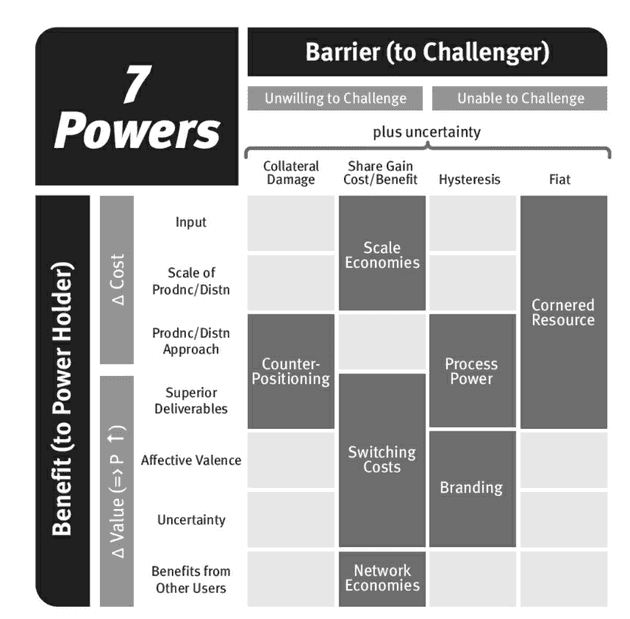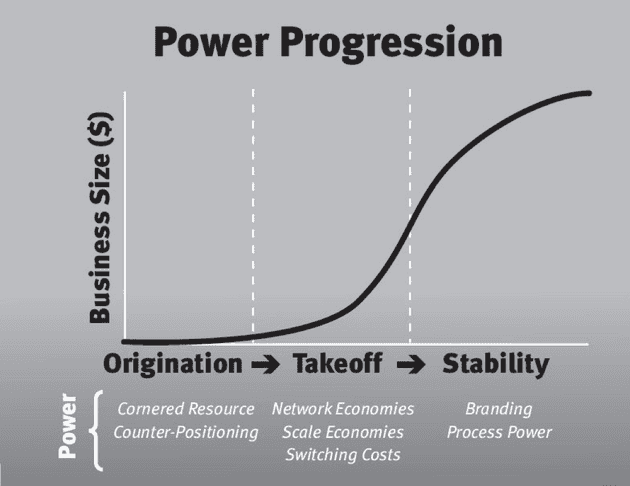7 Powers Framework for business strategy: Counter-Positioning, Cornered Resource, Scale Economies, Network Economies, Switching Costs, Branding, Process Power.
7 Powers: The Foundations of Business Strategy page 234
7 Powers by Hamilton Helmer is the best book I've read on business strategy framework. In the book, he listed 7 market powers that have the potential to realize persistent differential returns. It will be too long to explain in depth what all 7 powers are, but here's a concise version of each definition, the benefit for the power holder, and the barrier for the challenger.
The 7 powers listed in the book are:
Counter Positioning:
- Definition: The adoption of a novel, superior business model that incumbents can't replicate due to the anticipated cannibalization of their existing business
- Benefit: Lower costs and/or higher prices due to more valuable product
- Barrier: Cannibalization of existing business
Cornered Resource
- Definition: Preferential access to valuable resources
- Benefit: Possibility of higher prices, cost savings, or superior products
- Barrier: Range from legal protections to retention of crucial talent
Scale Economies
- Definition: Unit Costs decrease as production volume increases
- Benefit: Cost savings
- Barrier: High expense associated with gaining market share
Network Economies
- Definition: Each additional user enhances value for all users
- Benefit: Ability to charge higher prices due to more value provided
- Barrier: Difficulty in gaining users due to less value of smaller networks
Switching Costs
- Definition: Customers expect a net loss from switching to an alternate
- Benefit: Ability to charge higher prices for the same product
- Barrier: Competitor has to incentive customer more to switch
Branding
- Definition: Benefit from higher perceived value to a similar offering for its established reputation
- Benefit: Higher pricing due to higher perceived quality or lower uncertainty
- Barrier: The lengthy and uncertain process of building a brand
Process Power
- Definition: Organizational activities enabling superior products or lower costs, replicable only with significant commitment
- Benefit: Product enhancements and/or cost reduction through optimized processes
- Barrier: Significant commitment of time or resources to emulate processes.
It's important to distinguish between the strategies used for the Statics, or "Being There"—which, for example, refers to what makes Intel's business consistently valuable—and the Dynamics, or "Getting There"—which relates to the developments that led to this favorable position.
For the "Being There" concept, he chose the term "Power" over the more traditional term "Moat" because "Power" implies a proactive approach, whereas "Moat" suggests only defense. And when discussing "Getting There," it's essential to understand that a business must leverage different types of Power at various stages, as illustrated in the subsequent chart.
